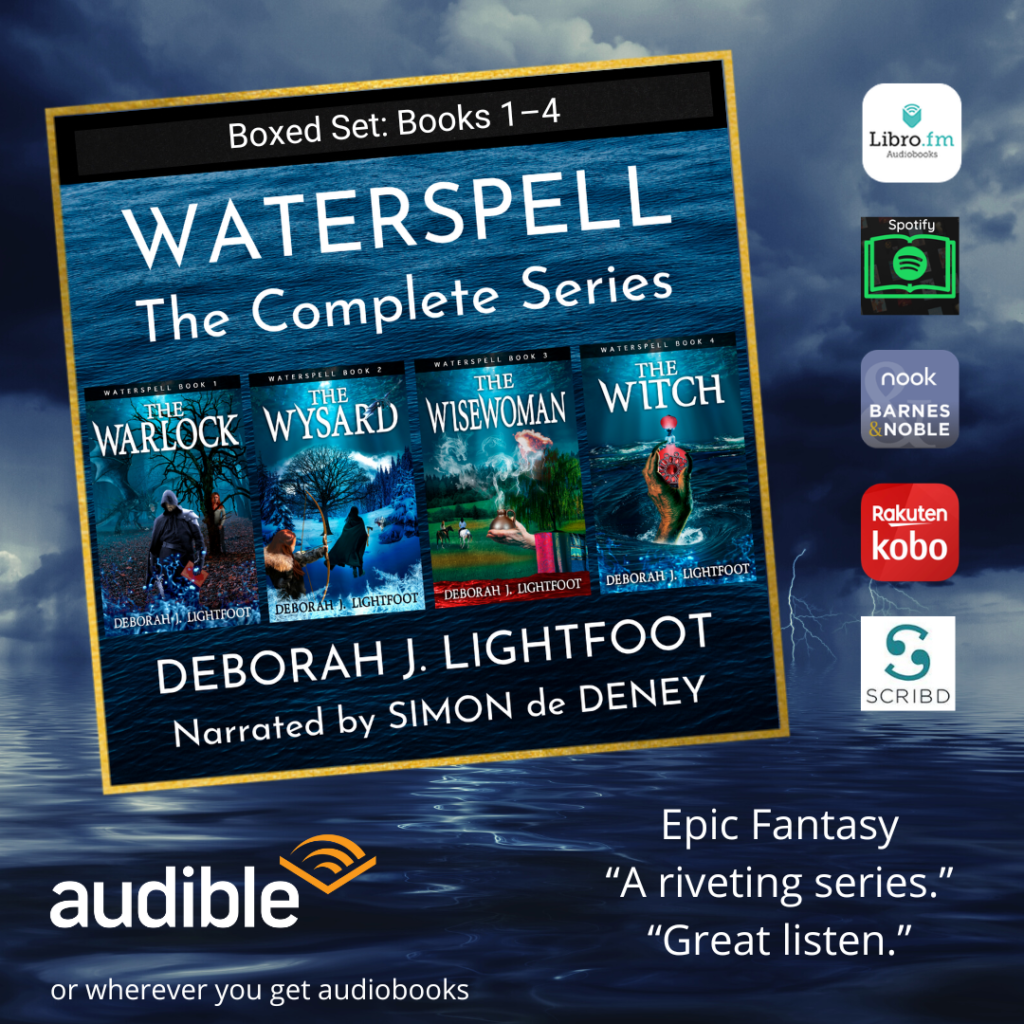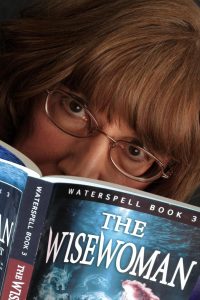Writers are often told to write what we know. Thus, it is not surprising that many authors choose to write about books and the people who love them.
The Book Thief by Markus Zusak tells of a girl who steals the things she can’t resist—books. The hero of Michael Ende’s The Neverending Story becomes a character in the mysterious book he is reading. In When You Reach Me by Rebecca Stead, the protagonist relies upon her favorite book, Madeleine L’Engle’s A Wrinkle in Time, as a kind of “life compass.”
 Following in that tradition, Lewis Carroll’s Alice books appear “as themselves” in my Waterspell trilogy. My heroine, Carin, first encounters Through the Looking-Glass (TTLG) and discovers the book holds within it a powerful weapon that only she can wield. Later, Carin gets her hands on a copy of Alice’s Adventures in Wonderland (AAIW) and continues to find veiled connections between the Carrollian world and her own perilous situation.
Following in that tradition, Lewis Carroll’s Alice books appear “as themselves” in my Waterspell trilogy. My heroine, Carin, first encounters Through the Looking-Glass (TTLG) and discovers the book holds within it a powerful weapon that only she can wield. Later, Carin gets her hands on a copy of Alice’s Adventures in Wonderland (AAIW) and continues to find veiled connections between the Carrollian world and her own perilous situation.
As an enthusiastic fan of Martin Gardner’s The Annotated Alice, I like to imagine how the late Mr. Gardner might annotate the Waterspell trilogy as he picked up on my novels’ subtle homages to the Alice books. I think he would remark on the reversed order in which Carin encounters the books. Lewis Carroll wrote AAIW first, then TTLG some years later. Throughout TTLG, things “go the other way,” so it is appropriate (as well as necessary to the plot of Waterspell) that Carin reads the books “the other way”—second book first.
Another play on the “other way” can be seen in the spelling of the names of the two leading ladies. “Alice” is vowel-consonant-vowel-consonant-vowel, while “Carin” (also five letters) is consonant-vowel-consonant-vowel-consonant.
The names of things are important in the Waterspell trilogy. In AAIW, the dormouse speaks of drawing all manner of things that begin with the letter M. I don’t doubt that Martin Gardner would notice the characters in Waterspell whose names start, like his, with M: among them Myra, Megella, and Merriam.
And on it goes. In Waterspell Book 3: The Wisewoman, Carin is required to travel under an alias. What name does she choose for herself? “Alice,” of course.
In no way, however, are the Waterspell novels a retelling of the Alice books. Though there are analogies—Carin’s reflective “mirror pool” recalls Alice’s looking-glass—my story follows its own unique trajectory.
To capture the gist of Waterspell, one might say it’s “Jane Eyre meets a sorcerer.” The relationship between my main characters is reminiscent of the stormy sparring between Jane and Rochester. Waterspell is a story for young adults and older. Though an Alice motif runs deep in my trilogy, Waterspell is no more a “children’s book” than is The Hunger Games or Philip Pullman’s epic trilogy of fantasy novels, His Dark Materials. My characters encounter great danger, violence, murder, and betrayal.
 Writing this blog post has helped me pull my thoughts together as I prepare to attend the April 18 meeting of the Lewis Carroll Society of North America in Austin, Texas. In the company of fellow Carrollians, I might have occasion to explain how my books connect to Alice. I want to be prepared, for I can think of no more appropriate readers than a group of Lewis Carroll enthusiasts who know the Alice books backwards and forwards. (There’s that reversal theme again!)
Writing this blog post has helped me pull my thoughts together as I prepare to attend the April 18 meeting of the Lewis Carroll Society of North America in Austin, Texas. In the company of fellow Carrollians, I might have occasion to explain how my books connect to Alice. I want to be prepared, for I can think of no more appropriate readers than a group of Lewis Carroll enthusiasts who know the Alice books backwards and forwards. (There’s that reversal theme again!)
~~~~~

“If you like epic fantasy that sweeps you to amazing, immersive worlds and while following intriguing characters, be sure to add this series to your to-read list.” —Once Upon a YA Book
“Keeps you enthralled until the final sentence. Carin and Verek are such rounded and full characters.” —Kim Durbin
“I really loved the main characters, particularly because they are complicated. I also enjoyed the writing. It is stylized perfectly to the story, so you feel you are in the Waterspell world. I definitely recommend these books!” —Beck Digs It
“I was hooked instantly when I started reading [Waterspell Book 1] The Warlock. I willingly gave up sleep and honestly could not wait to get up to read more of this book. I’m reading the whole series, and I absolutely am loving it.” —Sarah
“… a fabulous trilogy that should be read by every fantasy reader who would like something a little different. The author cleverly creates tension without resorting to the battles, complex political intrigue and predictable structure favoured by many in the traditional fantasy genre. I give it 5 stars without hesitation.” —Tahlia Newland
“The writing is absolutely fantastic with so much detail and description. The imagery was so vivid that I felt like I could see this mystical world forming around me.” —Laura Hartley, “What’s Hot?”
 Here are a few photos from my visit, but I highly recommend that you make the trip yourself. Alice is on view at the Ransom Center through July 6, 2015. To see what other events are happening this year as we celebrate the 150th anniversary of the publication of Alice’s Adventures in Wonderland, go to www.Alice150.com.
Here are a few photos from my visit, but I highly recommend that you make the trip yourself. Alice is on view at the Ransom Center through July 6, 2015. To see what other events are happening this year as we celebrate the 150th anniversary of the publication of Alice’s Adventures in Wonderland, go to www.Alice150.com.
















